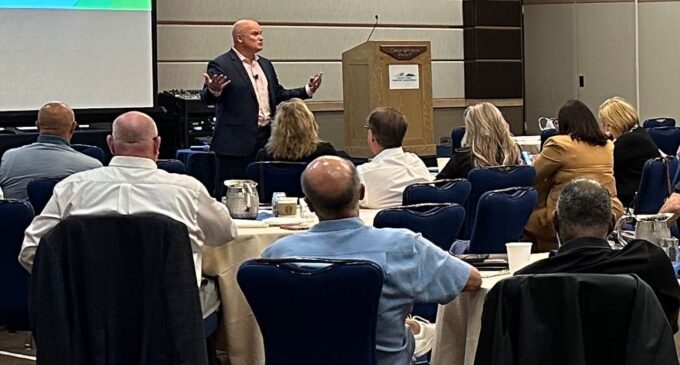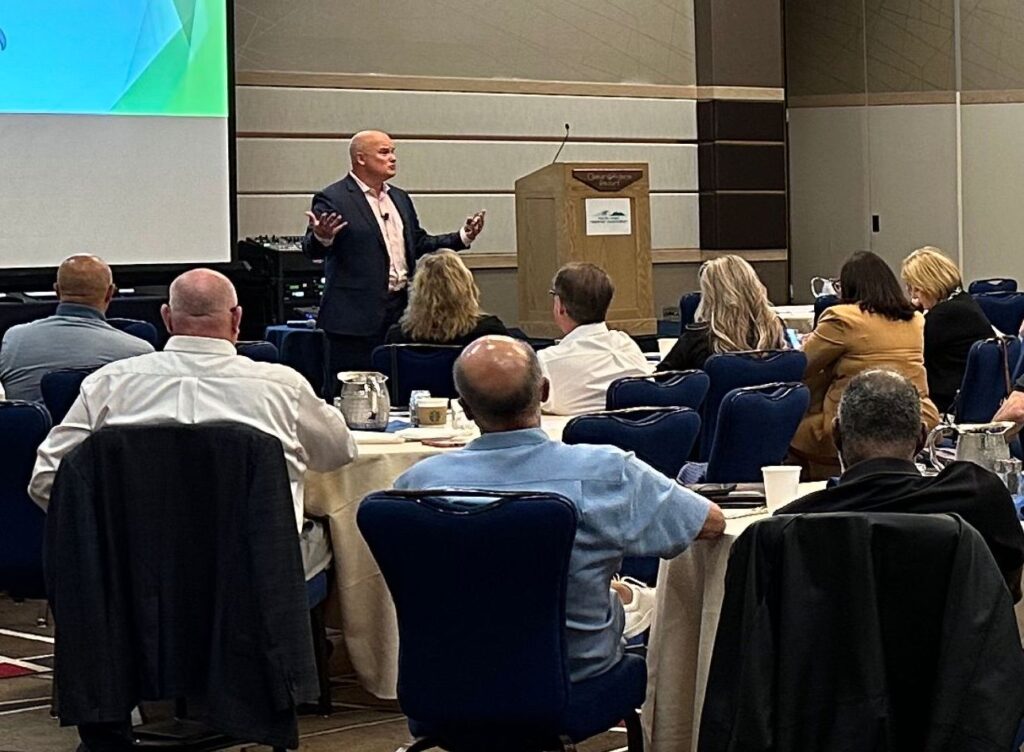Bader at Pac-West: Questions, Titles Limit Dead Stock


Bader addressing Pac-West (credit: Pac-West)
To prevent dead stock, make it hard to bring new items into stock, consultant Jason Bader told the Pacific-West Fastener Association.
New items are the #1 cause of dead stock, Bader finds.
Avoid emotional additions. “It is the emotional side of a salesperson who says, ‘I’ll bet I can sell that.’”
The #1 buyer of soon-to-be-unsold inventory? Owners of distributorships, Bader finds.
Ask questions before adding new items to the inventory. Who is going to buy it? Will there be training support? Who else sells it? Is there a sell-through guarantee?
Is the supplier offering any guarantees? “Spend with people who want to back up,” Bader advised.
If it is a new product, what is the launch date? What are expected margins? Will this supersede an item? Is there a sell-through guarantee? What is the intended margin? What is the training plan?
Before adding a new product to inventory, “you must list more than one customer,” Bader said.
And sometimes the purchaser has to say “No.”
Bader, of the Distribution Team, has 30 years experience in distribution. He was the 2003 president of the Specialty Tools & Fasteners Distributor Association.
Bader demonstrated using gross margin from stock sales (GMROI) and inventory turns to calculate inventory investment. Measure by buyers and product lines in each branch, he said. You need the data to make inventory decisions, he said.
One step to reducing dead stock is appointing a dead stock manager who will take a non-emotional response to inventory, Bader suggested. Make it an incentive-based pay position. It could be a part-time job for a retiree.
Another step is verbiage. Bader said changes in titles can make a point: From “buyer” or “purchasing agent” to “inventory investor” or “director of investments” can motivate.
Also, “let software do its job,” Bader added. Distributors are using only 15% of software capability, Bader finds.
It isn’t just inventory that costs. “Sometimes we keep customers around that shouldn’t be,” Bader said. “I’m ok with losing a few.”
Distributors should develop a “hit list” calculating the number of times a product is purchased. Anything less than four hits a year is a candidate for non-stocking.
There is a cost of holding inventory, Bader emphasized. “Every bin location is rentable property.” It is an “opportunity cost.”
- For new suppliers, ask about freight terms, payment, expected margins and liability insurance, goal of low teens in two years?
- A certain amount of dead stock is inevitable, Bader acknowledged. “You are not going to get down to zero. We gamble. Customers change,” he cited as reasons.
- Don’t use “cookie cutter” approaches to stocking in different locations. There are geographic preferences, Bader advised.
- Additional steps in reducing dead stock: Can you return to vendor? Hold customers accountable? Peer networking .. can you help each other out? Charitable contribution?
Ultimately, what can a distributor do with dead stock? “Dump it,” Bader declared. Web: Pac-West.org


There are no comments at the moment, do you want to add one?
Write a comment